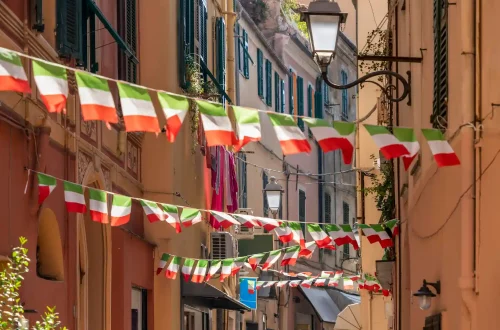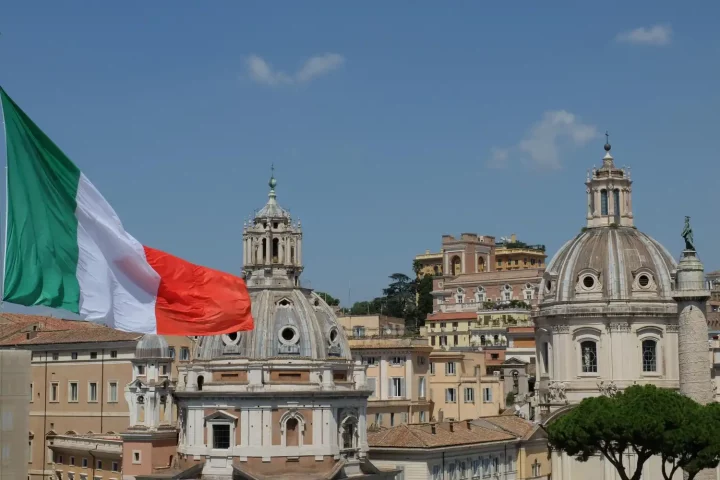When we think of an entire nation, we often rely on stereotypes—mental shortcuts that help us categorize people, but rarely reflect the full truth. Italians, perhaps more than most, have been subject to a colorful array of clichés that have persisted across generations and borders.
In the United States, where millions of Italian immigrants settled in the late 19th and early 20th centuries, these italian stereotypes became embedded in popular culture through film, television, and even advertising.
From the passionate chef waving his hands in the air to the mafia boss sipping espresso in a tailored suit, the image of the Italian has been both romanticized and distorted.
These portrayals, while sometimes affectionate, often reduce a rich and diverse culture to a handful of exaggerated traits. Yet, they continue to shape how Italians are perceived globally.
The most common Italian stereotypes
Let’s take a look at some of the most enduring clichés associated with Italian culture:
- Gastronomy obsession: Italians are often portrayed as being obsessed with food—particularly pizza, pasta, and coffee. While Italian cuisine is indeed world-renowned, the stereotype suggests an almost religious devotion to culinary tradition.
- Expressive gestures: The idea that Italians “speak with their hands” is widespread. Animated gesturing is seen as a hallmark of Italian communication.
- Family-centric culture: Italians are frequently depicted as having strong family bonds, with large gatherings, loud conversations, and multi-generational households.
- Fashion and style: “Italians are always fashionable” is another common belief, often linked to the country’s reputation for luxury brands and design.
- Romantic and passionate: Italians are often seen as emotionally intense, whether in love, argument, or celebration.
While some of these traits have roots in reality, they are often exaggerated or misunderstood, especially when transplanted into foreign contexts.
The reality behind the stereotypes
Stereotypes are rarely entirely false—but they’re almost never entirely true either. Let’s unpack a few of these ideas:
- Food: Yes, Italians care deeply about their cuisine. Recipes are passed down through generations, and regional dishes are fiercely protected. However, not every Italian eats pasta daily or reacts dramatically to culinary improvisation.
The stereotype holds a kernel of truth, but it overlooks the diversity of Italian food culture and the modern evolution of eating habits.
- Gestures: Italians do tend to be expressive, and gesturing is a natural part of communication. But this varies by region, personality, and context. It’s not a universal behavior, nor is it exclusive to Italians.
- Fashion: While Italy is home to iconic fashion houses, not every Italian walks around in designer clothing. Many Italians value personal presentation, but economic realities and personal taste vary widely.
- Family: The importance of family is real, but the stereotype of the overbearing Italian mother or the loud Sunday dinner is more cinematic than sociological. Modern Italian families are as diverse and dynamic as any others.
Take advantage of specialized assistance to secure your passport for a borderless future.
Italian citizenship: beyond the clichés
For those seeking Italian citizenship—whether through ancestry, marriage, or residency—it’s crucial to understand that being Italian goes far beyond stereotypes. Citizenship is not just a symbolic connection to pasta and piazzas; it offers tangible benefits:
- Mobility: Italian citizens enjoy the right to live, work, and study in any EU country without a visa.
- Healthcare and education: Access to high-quality public services across Europe becomes available.
- Economic opportunities: Citizenship opens doors to employment and business prospects throughout the EU.
- Cultural reconnection: For descendants of Italian immigrants, citizenship can be a powerful way to reclaim heritage and deepen understanding of their roots.
In this sense, Italian citizenship is not just a passport—it’s a gateway to a broader identity and a richer life experience.
Impact of stereotypes on the Italian-American community
In the United States, Italian-Americans have long grappled with the duality of pride and prejudice. On one hand, there’s a strong sense of cultural pride—celebrated through festivals, food, and family traditions.
On the other, there’s the burden of stereotypes that can feel reductive or even offensive.
The portrayal of Italians in American media has often leaned into caricature: the mobster, the overbearing mother, the loud and emotional patriarch.
These images can shape public perception and influence how Italian-Americans are treated or understood. For younger generations, this can create tension between embracing heritage and resisting stereotypes.
Community organizations, cultural centers, and educational initiatives have worked to promote a more nuanced understanding of Italian culture—one that honors tradition without falling into cliché.
Take advantage of specialized assistance to secure your passport for a borderless future.
Why understanding authentic Italian culture matters for future citizens
For those pursuing Italian citizenship, engaging with authentic Italian culture is not just respectful—it’s essential. Citizenship implies a relationship with a country, and that relationship should be built on knowledge, appreciation, and curiosity.
Understanding the real Italy means:
- Learning about regional diversity—from the Alps to Sicily.
- Appreciating the historical and artistic contributions of Italy to the world.
- Exploring contemporary Italian society, politics, and values.
- Traveling, reading, and connecting with locals to gain firsthand insight.
By moving beyond stereotypes, future citizens can form a deeper bond with Italy—one that honors both heritage and reality.






